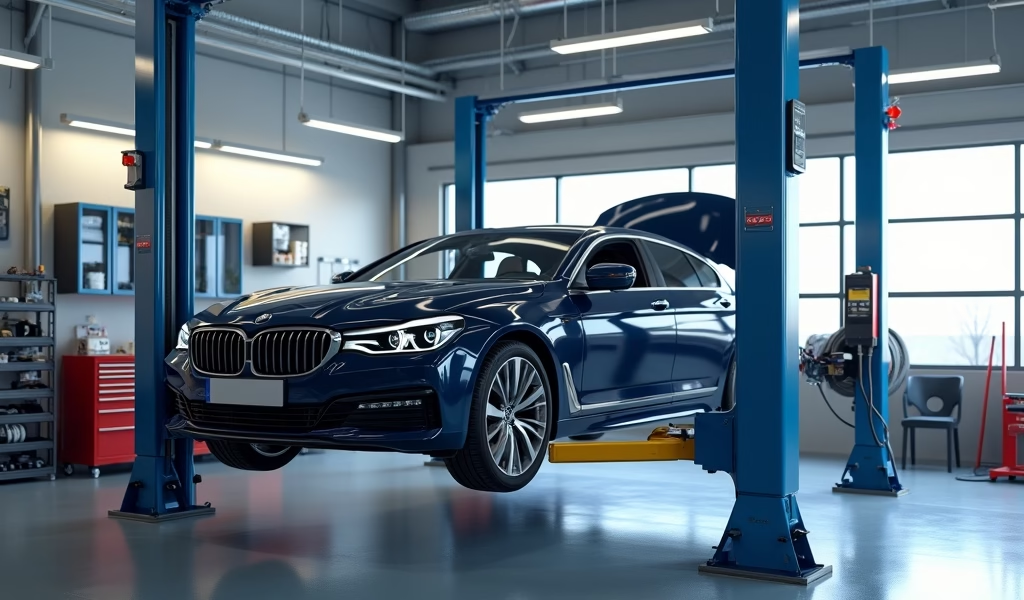Overview
This article explains how pre-approved auto loans provide buyers with budget clarity and negotiating power, while emphasizing five essential maintenance practices to protect this investment: following maintenance schedules, proper tire care, monitoring fluid levels, battery upkeep, and interior preservation. Regular maintenance not only prevents expensive repairs but also preserves the vehicle’s resale value, potentially saving thousands over the life of the loan.
Table of Contents
- Why Pre-Approval for Auto Loans Matters
- Understanding Pre-Approved Auto Loans
- Tip 1: Regular Maintenance Keeps Your Investment Protected
- Tip 2: Tire Care – The Foundation of Safe Driving
- Tip 3: Essential Fluid Checks You Shouldn’t Skip
- Tip 4: Battery Maintenance for Reliable Starts
- Tip 5: Interior Care for Comfort and Value
- Conclusion
- Frequently Asked Questions
Why Pre-Approval for Auto Loans Matters
Securing a pre approval auto loan might seem like just another step in the car-buying process, but trust me, as someone who’s seen the stress on customers’ faces when financing falls through at the dealership, it’s a game-changer. Think of it as your golden ticket to a smoother car-buying experience. When you walk onto that lot with a pre-approved loan, you’re not just another hopeful buyer – you’re a serious customer with real buying power.
I’ve seen folks save thousands simply because they knew exactly what they could afford before falling in love with that shiny new ride. Getting pre-approved for a car loan gives you a clear budget, stronger negotiating position, and protection from those financing curveballs that dealerships sometimes throw your way. It’s like having the answers before taking the test!
But here’s where many new car owners miss the mark – they focus all their energy on securing the vehicle but forget about maintaining their investment after driving off the lot. That’s why I’ve put together these five essential car care tips that’ll help protect your investment long after you’ve signed those loan papers.
Understanding Pre-Approved Auto Loans
Before diving into maintenance, let’s get crystal clear on what a pre approval auto loan actually is. In simple terms, it’s when a lender gives you the green light for a specific loan amount before you’ve even chosen your vehicle. Think of it as knowing your budget before you go shopping – incredibly practical, right?
When you get pre-approved for an auto loan, the lender reviews your credit history, income, and other financial factors to determine how much they’re willing to lend you and at what interest rate. This process typically takes a few days and results in a commitment letter you can take to the dealership.
The beauty of pre-approval is in the power it gives you. You’ll negotiate from a position of strength, focusing only on vehicles within your confirmed budget. According to Consumer Financial Protection Bureau, shoppers with pre-approved financing often secure better deals because they’re essentially “cash buyers” from the dealership’s perspective.
Once you’ve leveraged your pre-approval to get that perfect car, the real journey begins – keeping your new investment in top condition. That’s where these next five tips become invaluable.

Tip 1: Regular Maintenance Keeps Your Investment Protected
Think of your car’s maintenance schedule as its personal healthcare plan. Just like you wouldn’t skip your annual check-up, your vehicle needs regular attention to stay healthy and reliable. And here’s the thing – consistent maintenance isn’t just about preventing breakdowns; it’s about protecting the investment you secured with that pre approval auto loan.
Your owner’s manual is the bible here – it contains a detailed maintenance schedule specifically tailored to your vehicle. These aren’t just suggestions; they’re carefully calculated intervals designed by engineers who built your car. Following this schedule helps prevent small issues from becoming expensive nightmares.
Here’s what regular maintenance typically includes:
- Oil changes (typically every 3,000-7,500 miles depending on your vehicle and oil type)
- Air filter replacements (usually every 15,000-30,000 miles)
- Spark plug checks and replacements (typically every 30,000-100,000 miles)
- Timing belt service (usually between 60,000-100,000 miles)
- Brake inspections (recommended with every oil change)
I’ve seen countless cars roll into my shop with catastrophic engine damage that could have been prevented with simple oil changes. One customer ignored his timing belt replacement interval – a $500 service that turned into a $3,500 engine repair when it snapped. That’s money that could have gone toward paying down his auto loan instead.
Pro tip: Create calendar reminders for your maintenance schedule or use one of the many car maintenance apps available. Think of each maintenance visit as an investment in your vehicle’s longevity and reliability, not as an expense. Your future self (and wallet) will thank you.
Tip 2: Tire Care – The Foundation of Safe Driving
If your car’s maintenance schedule is its healthcare plan, then your tires are its shoes – and walking around in worn-out footwear is never a good idea. Tires are quite literally where the rubber meets the road, affecting everything from fuel efficiency to how quickly you can stop in an emergency. Proper tire care is essential to protect both your safety and the investment you made with your car loan pre-approval.
First things first: tire pressure is something you should check monthly. It takes less than five minutes but makes a world of difference. Underinflated tires don’t just wear out faster; they actually reduce your gas mileage by around 0.2% for each 1 PSI drop below the recommended pressure. That might sound small, but it adds up quickly!
Here’s your tire care checklist:
- Check tire pressure monthly (including the spare)
- Inspect tread depth regularly (the penny test is an easy method)
- Rotate tires every 5,000-8,000 miles
- Get wheels aligned annually or whenever you notice uneven wear
- Balance tires when you notice vibration at certain speeds
I had a customer who came in complaining about poor gas mileage in her new SUV. Her tires were underinflated by almost 10 PSI! After properly inflating them, she reported gaining nearly 30 miles per tank. Over the life of her auto loan, that’s thousands in savings.
Remember that tires don’t last forever – even with perfect care. Most quality tires will give you around 50,000-60,000 miles of service. According to National Highway Traffic Safety Administration, replacing them when tread depth reaches 2/32″ isn’t just recommended – it’s essential for safety. When you consider that tires are your only connection to the road, that’s not a place to skimp.
Tip 3: Essential Fluid Checks You Shouldn’t Skip
Your car runs on more than just gas and good intentions. There’s a whole cocktail of fluids keeping your vehicle’s systems running smoothly, and monitoring them regularly is crucial to avoiding costly repairs. Think of these fluids as your car’s lifeblood – each with its own vital role in keeping your pre approval auto loan investment running smoothly.
Engine oil gets most of the attention (and rightly so), but it’s just one part of the fluid family your car depends on. Each fluid has different service intervals, but a quick visual check of levels can be done monthly as part of your routine maintenance.
Here are the essential fluids you should monitor:
- Engine oil: The lubricant that keeps your engine’s moving parts from destroying each other
- Coolant/antifreeze: Regulates engine temperature and prevents freezing in cold weather
- Brake fluid: Enables your hydraulic brake system to function properly
- Power steering fluid: Makes steering smooth and manageable
- Transmission fluid: Lubricates and cools your transmission components
- Windshield washer fluid: Not critical for operation but essential for visibility
One memorable customer ignored her coolant level warning light for weeks. By the time she came in, her engine had overheated multiple times, causing a blown head gasket. What could have been a $20 coolant top-off turned into a $1,500 repair bill. That’s an expensive lesson!
Low fluid levels often indicate leaks or consumption issues that, if caught early, can be minor fixes. Let them go, and you’re looking at potential system failures that could leave you stranded and facing serious repair costs. Just five minutes of fluid checks each month can save you thousands over the life of your auto loan.

Tip 4: Battery Maintenance for Reliable Starts
There are few things more frustrating than turning your key only to hear that dreaded clicking sound of a dead battery. Battery issues rank among the top reasons for roadside assistance calls, yet they’re often the easiest problems to prevent with a little regular attention. Keeping your battery in good shape ensures your investment secured through pre approval auto loan doesn’t leave you stranded.
Most car batteries last about 3-5 years, but extreme temperatures, short trips, and electrical accessories can significantly shorten that lifespan. The good news? Simple maintenance can help maximize your battery’s service life.
Here’s your battery maintenance checklist:
- Keep battery terminals clean and free of corrosion
- Check that connections are tight (but not overtightened)
- Have the charging system tested annually
- Consider a battery tender if your car sits unused for extended periods
- Be aware that extreme temperatures (both hot and cold) stress batteries
I remember a customer who couldn’t figure out why his relatively new battery kept dying. Turns out, a tiny LED light in his aftermarket stereo was drawing just enough power to drain the battery over a few days of sitting. Finding and fixing “parasitic draws” like this can save you from repeatedly replacing batteries.
Battery technology has improved drastically, but they still require attention. According to research from AAA, extreme temperatures can reduce battery capacity by up to 60%, meaning your three-year-old battery might suddenly fail during a cold snap. A simple battery test during your regular oil change can predict issues before they leave you stranded.
Pro tip: Keep your battery connections clean using a mixture of baking soda and water on corroded terminals. The white or greenish powder that sometimes forms on terminals creates resistance that makes your starting system work harder than necessary. Clean connections mean efficient power flow and a longer-lasting battery.
Tip 5: Interior Care for Comfort and Value
When we talk about car maintenance, it’s easy to focus exclusively on what’s under the hood. But the interior is where you actually spend your time, and it significantly impacts both your driving experience and your vehicle’s resale value. That car you purchased with your pre approval auto loan will eventually be sold or traded in, and a well-maintained interior can mean the difference of hundreds or even thousands of dollars in its future value.
Interior care goes beyond just occasional vacuuming. It’s about protecting surfaces from UV damage, preventing stains before they happen, and addressing minor issues before they become permanent problems.
Here’s your interior maintenance game plan:
- Use a quality UV protectant on your dashboard and trim to prevent cracking and fading
- Clean spills immediately to prevent staining and odors
- Vacuum regularly, including under seats and in crevices
- Consider weather-appropriate floor mats to protect carpeting
- Keep leather conditioned to prevent drying and cracking
- Use window shades when parking in direct sunlight for extended periods
I had a customer who traded in two identical model year vehicles. One owner had protected the interior religiously – using seat covers, regular cleaning, and window shades. The other had let kids eat in the car, never used sun protection, and rarely cleaned. The difference in trade-in value? Nearly $2,000. That’s money that could have gone directly toward their next vehicle purchase.
Even simple habits like keeping a small trash container in the car and using seat protectors can preserve your interior’s condition. Think of it as protecting your investment one small action at a time. And remember – the comfort of a clean, well-maintained interior makes every drive more enjoyable, which is the whole point of having a nice vehicle in the first place!
Conclusion
Securing a pre approval auto loan is just the first step in your car ownership journey. The real value comes from protecting that investment through consistent, thoughtful maintenance. Each of the five car care tips we’ve discussed – regular maintenance scheduling, proper tire care, fluid monitoring, battery maintenance, and interior protection – plays a crucial role in maximizing the return on your automotive investment.
Remember that vehicle maintenance isn’t just about avoiding breakdowns (though that’s certainly important!). It’s about preserving value, ensuring safety, and ultimately saving money over the life of your loan. Every dollar you invest in preventive maintenance potentially saves you several dollars in avoided repairs and preserved resale value.
The best approach is to develop a maintenance mindset from the very first day you drive your new vehicle home. Create a schedule, set reminders, and make these checks part of your routine. Your vehicle is likely one of the largest purchases you’ll make – treating it with care makes financial sense.
With these tips in your toolkit and a pre-approved auto loan giving you the right start, you’re well on your way to years of trouble-free driving. Your future self (and wallet) will thank you for the attention you pay today.
Frequently Asked Questions
What exactly is a pre-approval auto loan?
A pre-approval auto loan is a conditional commitment from a lender for a specific loan amount before you select a vehicle. It gives you a clear budget and stronger negotiating position at the dealership.
How long does the pre-approval process typically take?
Most lenders can process auto loan pre-approvals within 1-3 business days. Some online lenders offer same-day pre-approvals if you have all required documentation ready.
Does getting pre-approved affect my credit score?
Pre-approval typically requires a hard credit inquiry which may temporarily lower your score by a few points. Multiple auto loan inquiries within a 14-45 day period are usually counted as a single inquiry.
How long does a pre-approval last?
Most auto loan pre-approvals are valid for 30-90 days depending on the lender. If your pre-approval expires, you’ll need to reapply and undergo another credit check.
Is there any difference between pre-qualification and pre-approval?
Yes, pre-qualification is usually based on self-reported information and doesn’t involve a hard credit check. Pre-approval involves verification of your financial information and is a stronger, more formal commitment from the lender.

